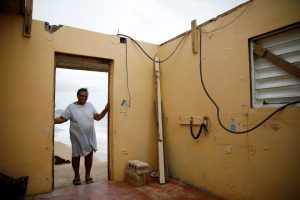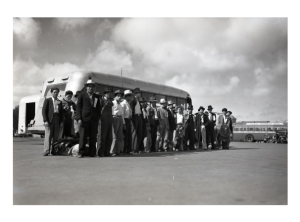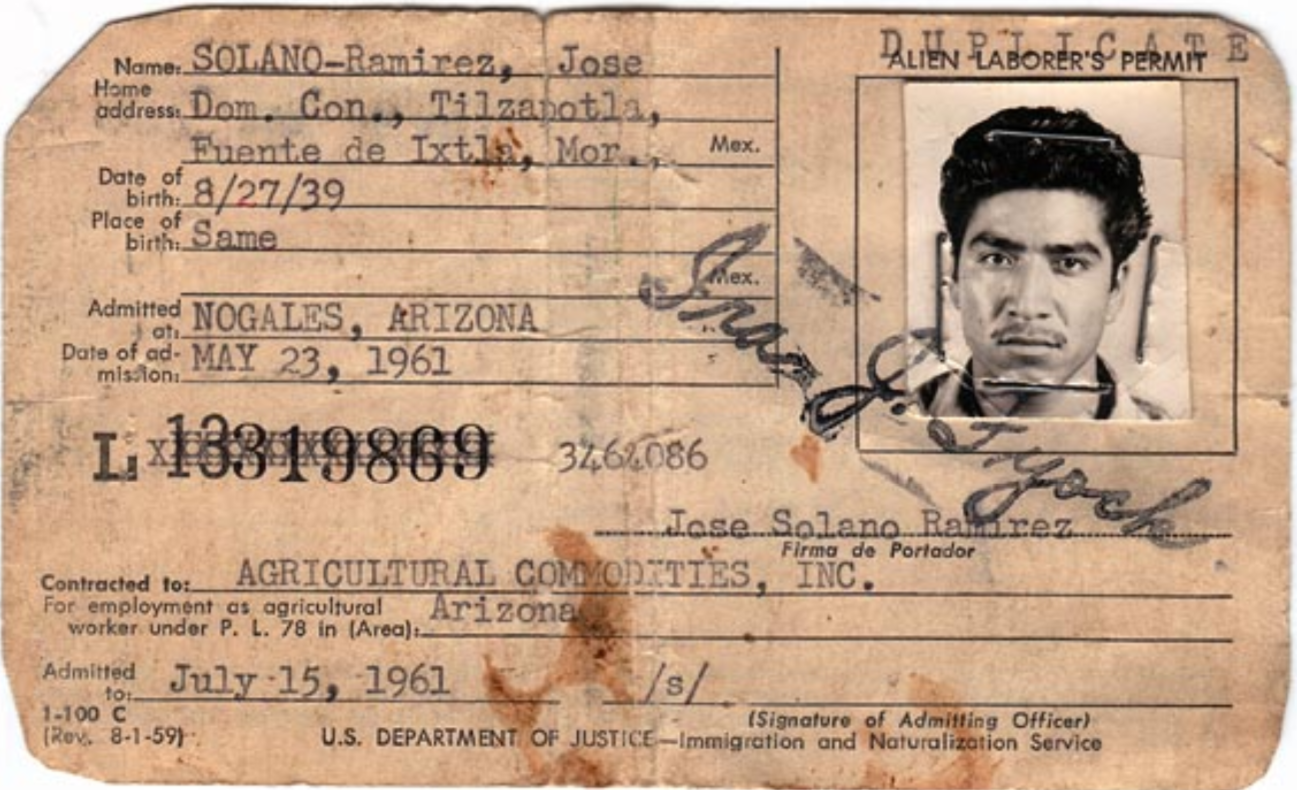Introduction
Racial and ethnic discrimination is common and highly variable in the context of which it occurs. Of course, this is often presented to us in the most upfront way of racial prejudices against a specific person regarding their ethnicity or cultural background, however, the inspection from where these notions are derived is never examined apart from purely the view within the colonial scope. Here I aim to take a stance directing an analysis towards policies of immigration as well as migratory and trade restrictions, to determine what, if any, consequences might have occurred in the regard to their implementation and the framework of racial prejudice we see today, particularly against peoples of Latin America. I feel that by opening up these discussions of how America has openly oppressed peoples of other nations, seemingly with no regard to the later consequences, we can bilaterally teach the side of history that is often never discussed, as well as use this knowledge in a preventable fashion for future political actions.
I will primarily be using documents including the Merchant Marine Act of 1920, the implementation of the Bracero Agribusiness Program, and the Immigration Act of 1924, along with others for the contextualization of my knowledge that will be highlighted in the source documentation. I want to first inspect the history of these policies in place, what their intent to accomplish was, and or still is, and what they did to achieve the desired restrictions set in place, then discuss how this has affected our world today. Through this examined period of 1920-1960, marking the end of the Braceros Program, there had been a common theme of the projection of Americanized power within these policies. This created an ideal of cultural conformity placed onto other peoples, which is in itself oppressive to all of those who do not fit the established American Image, with American only referring to the white European demographic, when in fact large numbers of immigrants had been a significant part of the American population during these times. All of which were, and still are, regarded as less than those who lie within the accepted image.
Policies
Section 27 of the Merchant Marine Act is labeled The Jones Act. The Jones Act sets in place a ban on transport between two United States ports on all shipments unless otherwise a U.S-Built, U.S-maned, U.S-flagged, and U.S-owned vessel.1 This was thought to project a sense of Americanized power throughout and onto the world by having an independent fleet of ships either for combat or trade, however, this act increases shipping costs within the U.S, between any two U.S ports to rates higher than they would be if otherwise shipped to or from Africa, Europe, or Latin America. This is because Jones act compliant ships are more expensive to build and several times more expensive to operate, as seeing how the U.S shipbuilding industry is not as big as it has become in other countries.2 The U.S wanted to essentially monopolize all ships that were to come in contact with any U.S port to be of U.S descent, making it so there is zero other competition in the shipbuilding industry. This reasoning consequently failed because comparatively it just takes more time and effort to build vessels in adherence to the act’s restrictions, whereas ships from other countries do not have to follow these guidelines and, unlike the U.S, are in much further stages of trade-ship mass production.
This determination of the U.S shipbuilding industry did have various other reasons behind it, such as making sure the U.S ports all had Sea-lift capabilities: The ability for all and any civilian ships, in this case being merchant ships set out solely for trade, to be commandeered by the navy during times of military need to supplement the government’s naval fleets.1 This would only occur in scenarios where the U.S military felt they were at such a disadvantage that they could no longer face the threat at hand with the fleet they reserved for this purpose, or if the fleet had consequently been destroyed in the battle and required new vessels immediately. These regulations in place allowed for the security against foreign vessels, being able to “steal” the market, as well as prevent them from physically being in U.S ports, in an attempt to also reduce chances of foreign dangers.
The debate behind the Jones Act is that with the U.S shipbuilding industry nowhere near any means of mass production, and the time and energy necessary to construct a Jones abiding vessel being much more costly, these costs are then actually passed on to the consumer in taxes and shipping fees, in result only harming those of U.S citizenship. The Jones Act can, however, be waived by the President of the United States, but only in the event of a threat to national security. This has happened before in the incidents of hurricanes Irma and Maria in Puerto Rico, only needing to be deemed a threat to security , not be one. Though in these cases it was necessary to do so for the fact that to provide emergency care supplies afterward, as well as assistance in clean-up, the ships bringing in these supplies would ultimately have to be coming from a port other than that of the mainland, which would require the U.S to ship medical supplies to another nation, unload, load onto their ship, and then consequently ship that vessel back to the U.S landing in Puerto Rico. The flaw in this policy is that it prevents necessary shipments not only in emergencies but also from preventing everyday commerce. The Jones Act also forbids any shipment between U.S ports of Liquid Natural Gas as considering that no Liquid Natural Gas (LNG) containable vessels can be made within the compliance of the Jones Act.1 This being so, LNG producers cannot ship their product to market through means of waterway vessels. All consumers receiving the product this way must have it imported, meaning they also must make sure to keep good relations with the nation of trade, as the initial importation permissions and costs would then fall into such nations’ determination, Trinidad being one location of this exchange. The more isolated locations of the U.S, such as Hawai’i and Puerto Rico, just as with any other mainland location have a regular demand for LNG as a regular commodity, however, hey cannot receive this product by direct means of shipment from the U.S mainland as this would still count as shipment between two U.S ports, though nonetheless anymore possible with a LNG transporting vessel.
, not be one. Though in these cases it was necessary to do so for the fact that to provide emergency care supplies afterward, as well as assistance in clean-up, the ships bringing in these supplies would ultimately have to be coming from a port other than that of the mainland, which would require the U.S to ship medical supplies to another nation, unload, load onto their ship, and then consequently ship that vessel back to the U.S landing in Puerto Rico. The flaw in this policy is that it prevents necessary shipments not only in emergencies but also from preventing everyday commerce. The Jones Act also forbids any shipment between U.S ports of Liquid Natural Gas as considering that no Liquid Natural Gas (LNG) containable vessels can be made within the compliance of the Jones Act.1 This being so, LNG producers cannot ship their product to market through means of waterway vessels. All consumers receiving the product this way must have it imported, meaning they also must make sure to keep good relations with the nation of trade, as the initial importation permissions and costs would then fall into such nations’ determination, Trinidad being one location of this exchange. The more isolated locations of the U.S, such as Hawai’i and Puerto Rico, just as with any other mainland location have a regular demand for LNG as a regular commodity, however, hey cannot receive this product by direct means of shipment from the U.S mainland as this would still count as shipment between two U.S ports, though nonetheless anymore possible with a LNG transporting vessel.
Due to the consequential fees, import quotas, and other taxes, Puerto Rico faces an extra 15-20% increase on all imported goods by ship, which happens to be the main mode of commerce for the territory due to the simple fact of it being an island.1 Just as in the scenario of medical supplies. U.S ships must ship from Jacksonville Florida to a chosen destination, where goods are then re-loaded onto a foreign vessel, then re-shipped to Puerto Rico who is then responsible for the end product’s increase in cost. If the U.S were to repeal this act or amend specific sections of the policy, they would increase revenues in many aspects and potentially boost the morale of their citizens, which seems to go along the lines of their initial aim of unifying the country. However, this drive of outdated nationalism is in turn, actually causing harm to their citizens, as well as keeping the image of foreign countries as a persistent possible threat, rather than modernizing to the ideals of a simple trade-partner.
The immigration Act of 1924, otherwise known as the Johnson-Reed Act, established an American immigration quota limiting people from any other country to 2% of the number of foreign-born persons of such nationality who were already resident in the U.S by 1890.3 This was implemented to preserve the ideal of American uniformity in fear that peoples from other countries with alternate ideals would influence the American peoples and lead to a form of secular revolt against their perceived greatness. This reduced common immigration from 357,803 persons in 1923-24 to 164,667 in the following year, impacting each country to a different extent.3 For the immigrants granted a position in this quota only those who are deemed able to contribute to society in a meaningful way were permitted, also excluding any alien ineligible to become a citizen. This was a target directly towards people from Japan and China in regards to the Japanese exclusion act.
The fear of dilution of American ideals had led to the notion that more immigrants would, in turn, cause the unemployment rates of American-born (white) citizens to rise. The U.S feared an immigrant uprising in a xenophobic wave derived from the Red Fear (1919-21), believing in the immigration of foreign radicals. The act sought to establish a distinct American identity by favoring native-born Americans over others, in an attempt to homogenize the U.S racial composition, also in avoidance of competition with foreign workers. This being said there was no actual quota established for peoples of the Western Hemisphere, that including those of Latin America, due to the sheer number of immigrants deriving from the location of such.
The influence of establishing quotas came from the 1890 census. When determining countries’ quota limits, it was deemed that countries with larger numbers of immigrants would thus have a larger quota allowance. However, due to the very large number of immigrants of Latin America, congress scrapped the quota for these counties in exchange for strengthening Southern border security. This decision was made because, per the prior, the quota to come of this would have been several times higher than that of the more sought after European countries, therefore decreasing the number of European immigrants they were able to accept. To not include census data within these quotas exclusionary criteria were set in place. Immigrants were only allowed to do so if they fell into one of the following categories of 1. Immigrants of Western hemisphere nations, 2. Aliens eligible for citizenship, 3. Descendants of slave immigrants, or 4. Descendants of the American aborigine.3 This was intentionally done so as the more countries they added to the quota system, the fewer immigrants there were able to allow to immigrate in from favored (European) countries. This once again strengthened the notion of American unity, though by American, referring to that of the past with unity meaning “of the same” rather than togetherness, fertilizing ideals of national separatism with “you are not the same as me” support as the government’s argument to do so.
The Braceros Agribusiness Program was a 1942 contractual agreement to allow guest Mexican workers into the United States without regularly necessary citizenship documentation. During World War II the U.S began to see an anticipated decline in American workers within many agricultural businesses while soldiers were away at war. This prompted President Roosevelt to discuss with Mexican President Manuel Ávila Camacho this labor shortage and the terms of agreement for the implementation of an agricultural intervention, bringing in the Braceros; farm laborers, for the time being. This agreement tasked the U.S with the responsibility for and to oversee that the Bracero did receive the implied basic human rights of the workforce while enrolled in this industry. Roosevelt opted for this program with the reasoning that 22% of Americans had currently been living on farms and providing a consistent flow of economy and commerce, the same Americans who were now away at war.4 There began to be pressure to ensure the agricultural industry did not decline, initiating the beginning of the Braceros Program.
Public law 78 Granted ensured rights to the Bracero workers, including stable pay and a respectable workplace.5 This was, however, until the U.S American Farm Bureau Administration executed the decentralization of the Bracero administration to the furthest extent, essentially invalidating all Bracero worker restrictions and controls. These were otherwise seen as their previously guaranteed rights including fixed minimum wage, a set cap-off of allowed labor hours, housing standards, and any allowance of workers unionization. This change of priorities narrowed down the U.S government’s focus on labor efficiency rather than prioritizing worker protections. This later resulted in a move from the previously supervised Bracero contracting, within Mexico City, to U.S contracting centers where the Braceros would be put through a series of interview requirements, many of which were often humiliating and borderline inhumane.6 This new systematic environment the Braceros were placed in consisted of the flagrant ignorance of the labor force promise, though it was still able to continue due to its technical legality. While the wages were very minimal, sometimes consisting of cents per daily, often, this was still a better option than some areas of employment in Mexico at the time, causing more often than not for the laborers to endure physical and mentally tasking jobs in the U.S for very little pay.
The program was intended to be mutually beneficial to both the U.S, needing relief of economic instability, as well, Mexico who had a large population of  unemployment currently seeking work.4 Once the American labor force was able to return, the Braceros contracts were considered to be at an end, and then transported back to Mexico. Though the circumstances of treating Mexican workers with very unfavorable conditions and associating the country as consisting of only cheap labor still currently persists. Policies as such in the U.S have, over time, further cemented already established notions of racism in our country, either socially in regards to opportunity. These attitudes of superiority have taken over various systems regarding economic and labor force prejudices. Further normalizing a racialized cycle of social oppression.
unemployment currently seeking work.4 Once the American labor force was able to return, the Braceros contracts were considered to be at an end, and then transported back to Mexico. Though the circumstances of treating Mexican workers with very unfavorable conditions and associating the country as consisting of only cheap labor still currently persists. Policies as such in the U.S have, over time, further cemented already established notions of racism in our country, either socially in regards to opportunity. These attitudes of superiority have taken over various systems regarding economic and labor force prejudices. Further normalizing a racialized cycle of social oppression.
Bibliography
Torres-Ríos, Nelson. “Limitations of the Jones Act: Racialized Citizenship and Territorial Status.” Rutgers Race and the Law Review 19, no. 1 (2018): 1-21.
Marie Olga Luis Rivera. “COMMENT: HARD TO SEA: PUERTO RICO’S FUTURE UNDER THE JONES ACT, 17 Loy. Mar. L.J. 63.”
Hatch, Orrin G, Chuck Grassley, Mike Crapo, Pat Roberts, Michael B Enzi, John Cornyn, John Thune, et al. “COMMITTEE ON FINANCE,” n.d., 143.
“Immigration Act (1924).” American History. ABC-CLIO, 2014. Web. 3 Mar. 2014.
Emanuel Celler, “To amend the Act of October 3, 1965.” House of Representatives, Bill 90 H.R. 11993
Lee, Catherine. “Family Reunification and the Limits of Immigration Reform: Impact and Legacy of the 1965 Immigration Act.” Sociological Forum, vol. 30, no. S1, 2015, pp. 528–548.
NGAI, MAE M. “Braceros, “Wetbacks,” and the National Boundaries of Class.” In Impossible Subjects: Illegal Aliens and the Making of Modern America – Updated Edition, 127-66. PRINCETON; OXFORD: Princeton University Press, 2004.
Creagan, James F. “Public Law 78: A Tangle of Domestic and International Relations.” Journal of Inter-American Studies, vol. 7, no. 4, 1965, pp. 541–556. JSTOR, www.jstor.org/stable/165274. Accessed 13 Apr. 2020.
Loza, Juan, Mireya Loza, and Mireya Loza. Juan Loza. Chicago, Illinois, 2005.
Harris, Leonard. “Alain Locke and Community.” The Journal of Ethics 1, no. 3 (1997): 239–47.
Lugones, María, and Mar Lugones. Pilgrimages/Peregrinajes: Theorizing Coalition Against Multiple Oppressions. Lanham, MD, UNITED STATES: Rowman & Littlefield Publishers, 2003.
- Hard to Sea: Puerto Rico’s Future Under The Jones Act
- Financial and Economic Challenges in Puerto Rico
- The Immigration Act of 1924
- “Braceros, “Wetbacks,” and the National Boundaries of Class.”
- Public Law 78: A Tangle of Domestic and International Relations
- Braceros Archive; Transcription of Loza, Juan
